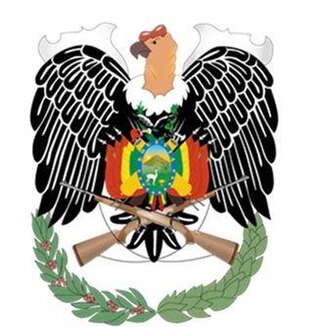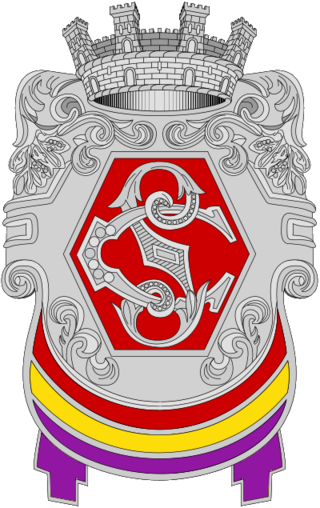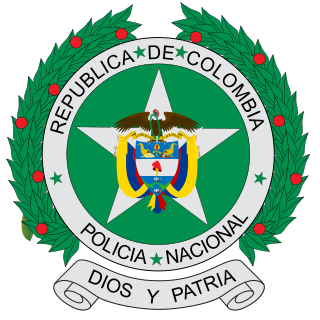
The Ertzaintza is the autonomous police force for the Basque Country, largely replacing the Spanish Policía Nacional and Guardia Civil. An Ertzaintza member is called an ertzaina.

The Mossos d'Esquadra, also known as the Policia de la Generalitat de Catalunya and informally as Mossos, is the autonomous police force in the Spanish autonomous community of Catalonia. They trace their origins back to squads formed in 1719.

The Civil Guard is the oldest law enforcement agency in Spain and is one of two national police forces. As a national gendarmerie force, it is military in nature and is responsible for civil policing under the authority of both the Ministry of the Interior and the Ministry of Defence. The role of the Ministry of Defence is limited except in times of war when the Ministry has exclusive authority. The corps is colloquially known as the benemérita. In annual surveys, it generally ranks as the national institution most valued by Spaniards, closely followed by other law enforcement agencies and the armed forces.

The National Police Corps is the national civilian police force of Spain. The CNP is mainly responsible for policing urban areas, whilst rural policing is generally the responsibility of the Civil Guard, the Spanish national gendarmerie force. The CNP operates under the authority of Spain's Ministry of the Interior. They mostly handle criminal investigation, judicial, terrorism and immigration matters. The powers of the National Police Corps varies according to the autonomous community. For example, the Ertzaintza and the Mossos d'Esquadra are the primary police agencies in the Basque Country and Catalonia, respectively. In Navarre they share some duties jointly with Policía Foral (Foruzaingoa).

Law enforcement in Italy is centralized on a national level, carried out by multiple national forces, helped by few limited local agencies. The Italian law enforcement system is considered complex, with multiple police forces and other agencies taking part in different duties. Policing in the Italian system refers to the duties of "full-powered officers" coming from the four national main forces: Polizia di Stato, Carabinieri, Polizia Penitenziaria and Guardia di Finanza. While the duties of these four corps' include investigating and arresting, other local forces carry out limited duties.

This article is about the government of Rosario, the third most populated city in Argentina, and the largest in the province of Santa Fe. Rosario has about 910,000 inhabitants 2001 census [INDEC] and is located on the western shore of the Paraná River.

In Brazil, the Federal Constitution establishes eight law enforcement institutions - seven titulars and one auxiliar. The titular institutions are: the Federal Police, the Federal Highway Police, the Federal Railroad Police, the Federal Penal Police, the State Military Police and Fire Brigade, the State Civil Police and the State Penal Police. Of these, the first four are affiliated to federal authorities and the latter three are subordinated to state governments. These public safety institutions are part of the Executive branch of either federal or state government. Apart from these eight institutions, there are others which affiliate to municipal authorities: the Municipal Guards. According to Minister Alexandre de Moraes of the Supreme Federal Court, "...the Municipal Guards are inserted in public safety as the auxiliary and related body of public security force..." Federal law 13,022 gave them de facto and de jure police attributions.

Law enforcement in Bolivia is reliant on the 40,000-member Cuerpo de Policía Nacional responsible for internal security and maintaining law and order. Unlike many South American countries, the Bolivian police force always has been accountable to the national government rather than to state or local officials. The 1950 Organic Law of Police and Carabiniers officially separated the police from the military. Frequently, however, the national police call upon the military for assistance in quelling riots and civil protests.

The Cuerpo de Seguridad y Asalto was the heavy reserve force of the blue-uniformed urban police force of Spain under the Spanish Second Republic. The Assault Guards were special paramilitary units created by the Spanish Republic in 1931 to deal with urban and political violence. Most of the recruits in the Assault Guards were ex-military personnel, many of which were veterans. They would later on be reformed and utilized in the Spanish Civil War as army infantry divisions.

The National Police of Colombia is the national police force of the Republic of Colombia. Although the National Police is not part of the Military Forces of Colombia, it constitutes along with them the "Public Force" and is also controlled by the Ministry of Defense. The National Police is the only civilian police force in Colombia. The force's official functions are to protect the Colombian nation, enforce the law by constitutional mandate, maintain and guarantee the necessary conditions for public freedoms and rights and to ensure peaceful cohabitation among the population.
The Statute of Autonomy of Catalonia is a constitutional law defining the region of Catalonia as an autonomous community within the Kingdom of Spain. It was promulgated on 18 September 1979. It is one of seventeen such statutes granted, in various forms and capabilities, to the different autonomous communities of Spain since the Spanish transition to democracy of the 1970s. On 18 June 2006 a referendum altering the statute to expand the authority of the Catalan government was approved; it became effective on 9 August 2006.

The municipality is one of the two fundamental territorial divisions in Spain, the other being the provinces.
Law enforcement in Spain is carried out by numerous organizations, not all of which operate in the same areas.
Law enforcement in Peru is carried out by two organizations under the direction of the Ministry of the Interior:

The Guàrdia Urbana is the municipal police force for the city of Barcelona, Catalonia, Spain.

In many countries, particularly those with a federal system of government, there may be several law enforcement agencies, police or police-like organizations, each serving different levels of government and enforcing different subsets of the applicable law.

The National Police of Peru is the national police force of Peru. Its jurisdiction covers the nation's land, sea, and air territories. Formed from the merger of the Investigative Police, the Civil Guard, and the Republican Guard in 1988, it is one of the largest police forces in Latin America. Its mission is to preserve domestic order, public order and national security, in order to enforce the law and protect the people of Peru. The PNP is controlled by the Ministry of the Interior. The PNP has a number of divisions, tasked with enforcing specific aspects of the law; among the more well known are DIROES, DIRANDRO, DIRINCRI, and DIRCOTE (Anti-Terrorism).

The Policía Municipal de Madrid is the municipal police force of the city of Madrid.

The Policía Armada, conventional long names Cuerpo de Policía Armada y de Tráfico and Fuerzas de Policía Armada, —popularly known as los grises owing to the color of their uniforms— was an armed urban police force of Spain established by the Francoist regime in 1939 to enforce the repression of all opposition to the regime. Its mission was "total and permanent vigilance, as well as repression when deemed necessary."




















